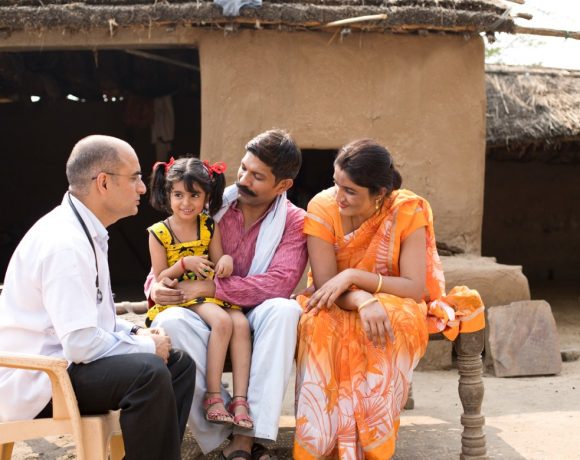- Health Stack will enable a seamless flow of information across all stakeholders in the ecosystem, which will help in enhancing trust and decision-making.
- Health Stack will bring down the cost of processing and increase access to information about an individual’s health and claims history, enabling the creation of personalised, sachet-sized insurance policies.
- Gamifier policies uses techniques from microeconomics to manage incentives for care providers, and those from behavioural economics to incentivise consumers. This can have a transformative impact on the healthcare landscape of the country.
This article was originally published in iSPIRT/ProductNation, a think tank formed by leading Indian software practitioners to build a healthy, globally competitive and sustainable software product industry. The article outlines the key features and benefits of the Health Stack and proposes the implementation of a policy engine, named Gamifier Policies, to transform the healthcare landscape in India.
In July 2018, NITI Aayog (a think tank of the Government of India) published a Strategy and Approach document on the National Health Stack. The document underscored the need for Universal Health Coverage (UHC) and laid down the technology framework for implementing the Ayushman Bharat programme which is meant to provide UHC to the bottom 500 million of the country. While the Health Stack provides a technological backbone for delivering affordable healthcare to all Indians, we, at iSPIRT, believe that it has the potential to go beyond that and to completely transform the healthcare ecosystem in the country. We are indeed headed for a health leapfrog in India! Over the last few months, we have worked extensively to understand the current challenges in the industry as well as the role and design of individual components of the Health Stack. In this post, we elaborate on the leapfrog that will be enabled by blending this technology with care delivery.
What is the health leapfrog?
Healthcare delivery in India faces multiple challenges today. The doctor-patient ratio in the country is extremely poor, a problem that is further exacerbated by their skewed distribution. Insurance penetration remains low leading to out-of-pocket expenses of over 80% (something that is being addressed by the Ayushman Bharat program). Additionally, the current view on healthcare amongst citizens as well as policymakers is largely around curative care. Preventive care, which is equally important for the health of individuals, is generally overlooked.
The leapfrog we envision is that of public, precision healthcare. This means that not only would every citizen have access to affordable healthcare, but the care delivered would be holistic (as opposed to symptomatic) and preventive (and not just curative) in nature. This will require a complete redesign of operations, regulations and incentives – a transformation that, we believe, can be enabled by the Health Stack.
How will this leapfrog be enabled by the Health Stack?
At the first level, the Health Stack will enable a seamless flow of information across all stakeholders in the ecosystem, which will help in enhancing trust and decision-making. For example, access to an individual’s claims history helps in better claims management, a patient’s longitudinal health record aids clinical decision-making while information about disease incidence enables better policymaking. This is the role of some of the fundamental Health Stack components, namely, the health registries, personal health records (PHR) and the analytics framework. Of course, it is essential to maintain strict data security and privacy boundaries, which is already considered in the design of the stack, through features like non-repudiable audit logs and electronic consent.
At the second level, the Health Stack will improve cost efficiency of healthcare. For out-of-pocket expenditures to come down, we have to enable healthcare financing (via insurance or assurance schemes) to become more efficient and in particular, the costs of health claims management to reduce. The main costs around claims management relate to eligibility determination, claims processing and fraud detection. An open source coverage and claims platform, a key component of the Health Stack, is meant to deal with these inefficiencies. This component will not only bring down the cost of processing a claim but along with increased access to information about an individual’s health and claims history (level 1), will also enable the creation of personalised, sachet-sized insurance policies.
At the final level, the Health Stack will leverage information and cost efficiencies to make care delivery more holistic in nature. For this, we need a policy engine that creates care policies that are not only personalised in nature but that also incentivise good healthcare practices amongst consumers and providers. We have coined a new term for such policies – “gamifier” policies – since they will be used to gamify health decision-making amongst different stakeholders.
Gamifier policies, if implemented well, can have a transformative impact on the healthcare landscape of the country. We present our first proposal on the design of gamifier policies. We suggest the use of techniques from microeconomics to manage incentives for care providers, and those from behavioural economics to incentivise consumers. The paper, authored by Saurabh Panjwani from iSPIRT, also gives examples of policies created by combining different techniques.
READ MORE ON GAMIFIER POLICIES
What’s next?
The success of the policy engine rests on real-world experiments around policies and in the document we lay down the contours of an experimentation framework for driving these experiments. The role of the regulator will be key in implementing this experimentation framework: in standardising the policy language, in auditing policies and in ensuring the privacy-preserving exchange of data derived from different policy experiments. Creating the framework is an extensive exercise and requires engagement with economists as well as computer scientists. We invite people with expertise in either of these areas to join us on this journey and help us sharpen our thinking around it.






NO COMMENT